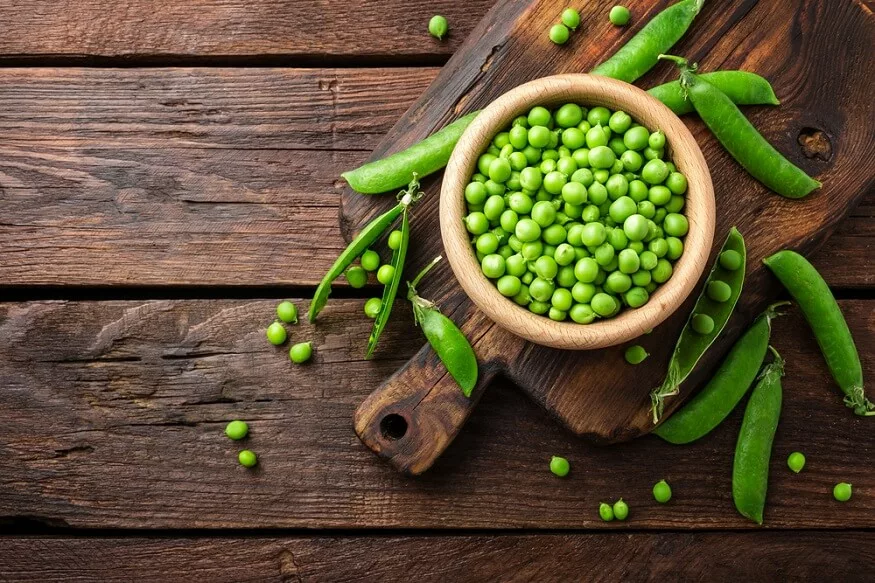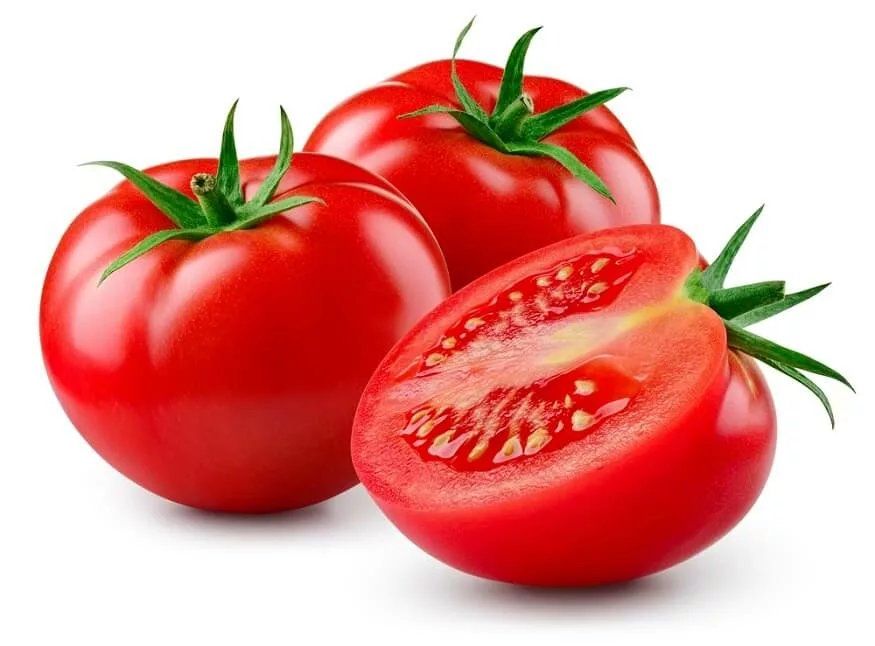As parents and caregivers, we have an important job of teaching our children about healthy eating. And one superfood we can introduce them to is peas. In this blog post, we will dive into the world of peas and learn how to teach kids about the nutritional value of peas.
1) Bring out the fun facts of peas
One way to introduce the value of peas to kids is to present some fun facts about peas. Sharing the interesting nuggets given below will make learning about peas more engaging, fun and memorable for the little ones.
- Peas Belong to the Legume Family: Peas come from the Fabaceae family, making them relatives of beans and lentils. Peas are unique in their family because they grow inside pods.
- The Earliest Pea Fossils were Unearthed in Asia: The first known instance of peas dates back 5000 to 6,000 years ago. Archaeologists have discovered evidence in regions like Thailand, the Eastern Mediterranean, and Georgia.
- Peas are one of the First Vegetables Ever Cultivated: Pea cultivation precedes the early Bronze Age and stretches into the late Neolithic era. Archaeological finds from Oklahoma in the United States commemorate the importance that peas had even during the time of the Native Americans.
- Pea Seeds Travelled in Space: Did you know peas have been to space too? They were among the initial plants to sprout aboard the International Space Station.
- High in Nutrition: Peas are an excellent source of Vitamin A, Vitamin C, proteins and dietary fibre.
- Growing Peas is Amazingly Easy: Peas are one of the easiest vegetables to plant. All they need is some sun, water, and support to grow towards the sky.
- “Peas” Aren’t Always Green: Although we usually consider peas green, they can also be yellow or purple.
- There are Different Types of Peas: There are four basic types of peas; garden peas, snow peas, snap peas, and marrowfat peas. Each type has different uses in cooking depending on its flavour and texture.
- There is a World Record for Eating Peas: Guinness World Records notes that the quickest time to eat peas was 44.23 seconds, a record achieved in Spain back in 2013.
Also read : The Importance of Eating a Variety of Fruits for Kids Health
2) Nutritional benefits of peas
100 grams (g) of peas contains:
- 81 Kcal Energy
- 45 g of Carbohydrates
- 42 g of Protein
- 40 g of Total Fat
- 0 mg of Cholesterol
- 1 g of Dietary Fiber
Vitamins:
- 65 µg of Folates
- 090 mg of Vitamin B3
- 266 mg of Vitamin B1
- 765 IU of Vitamin A
- 40 mg of Vitamin C
- 13 mg of Vitamin E
- 8 µg of Vitamin K
Electrolytes:
- 5 mg of Sodium
- 244 mg of Potassium
Minerals:
- 25 mg of Calcium
- 176 mg of Copper
- 47 mg of Iron
- 33 mg of Magnesium
- 410 mg of Manganese
- 8 µg of Selenium
- 24 mg of Zinc
- 449 µg of Carotene-ß
- 0 µg of Crypto-xanthin-ß
- 2477 µg of Lutein-zeaxanthin
Educate children about how the protein in peas helps them grow, build muscles, and enable their bodies to repair themselves. Explain how the fibre content aids digestion and keeps their tummy full and happy. By explaining how these nutrients benefit the body, you can help children understand why peas are so good for them.
Also read : Growth Milestones and Nutritional Needs: Tracking optimal physical and mental growth in kids
3) Different types of peas
There are approximately five main types of peas that are cultivated for food, including garden peas, snow peas, snap peas, marrowfat peas and yellow peas.
● Garden peas
Garden peas are the most common variety. They are grown for their sweet, round seeds which are packed in long pods. The pods are typically inedible, and the peas inside must be shelled before eating.
● Snow peas
Often used in stir-fry dishes, snow peas are flat and thin with a crisp texture. Owing to their edible pods that are free from a lining, they offer a different eating experience when compared to garden peas.
● Snap peas
This variety of peas is a crossbreed between garden and snow peas, with crisp, edible pods that are full-sized and highlight plump peas within. They are best consumed when the peas have not matured, so the entire pod can be enjoyed.
● Marrowfat peas
They are used mainly for making mushy peas, a traditional British dish. When dried, these peas are soaked and then boiled to create a thick, green soup, popularly served with fish and chips.
● Yellow peas
Known as split peas, these legumes are different not only because of their colour but also how we use them, mainly in soups and purees.
Introducing these various pea types to your child will help them explore the nutritional value of peas and inspire them to be adventurous eaters.
4) Health benefits of peas
- Promotes Digestive Health: The high fibre content in peas aids in digestion by adding bulk and moisture to stools, reducing constipation and promoting a healthy gut environment.
- Supports Blood Sugar Control: Peas have a low glycemic index, which is great for those managing diabetes.
- Good for Heart Health: Peas are packed with lutein, an antioxidant that promotes heart health by preventing the build-up of plaque in the arteries.
- Weight Management: Due to their high fibre and protein content, peas are extremely filling. This satiating quality can help control appetite and promote weight loss or maintenance.
- Eye health: Peas are rich in antioxidants – lutein and zeaxanthin that are eye protectors. They keep eyes healthy and prevent problems like cataracts and macular degeneration.
- Skin health: Vitamin C, E and beta-carotene boost collagen, fight inflammation, and battle free radicals to keep skin healthy.
- Anti-ageing benefits: High amounts of antioxidants help slow down the ageing process of your skin and boost overall health.
- Boosts immune system: The vitamin C content boosts the immune system, protecting the body against infections.
- Improves bone health: The vitamin K, plays a significant role in calcium absorption and thus, helps maintain bone health and strength.
Sharing these health benefits with your child can inspire them to make smarter food choices, like picking peas for a snack instead of carb-heavy options.
Also read : Food Allergies in Children: Identification, management, and potential long-term impacts.
5) Incorporating peas into daily meals
Once your child is familiar with the nutritional value of peas, show them how to incorporate peas into their daily meals. For breakfast, consider adding peas to omelettes. At lunch, make a tasty pea salad or add them to wraps and sandwiches. For dinner, you can use peas in many dishes like pasta, stir-fries, and casseroles.
Discuss the concept of a balanced diet and how peas fit into it. Explain that while treats are okay in moderation, eating a variety of nutritious foods, including peas, is essential for staying healthy and strong.
Involve them in meal planning by letting them choose a pea-based recipe for the week. Take them grocery shopping and let them pick out the peas and other ingredients they need. Show them how to prepare and cook peas safely, fostering their independence and culinary skills. Additionally, teach them about the importance of reducing food waste by using peas efficiently and storing them properly.
6) Get kids involved
To teach children about the nutritional value of peas, get your child involved in activities that revolve around peas. Planting peas in a garden or pots on a balcony can teach them about where food comes from and the joy of growing their vegetables. Get creative with pea art projects, using peas as stamps to make colourful designs. Or organise a pea-themed scavenger hunt in your backyard, with peas as the hidden treasures.
Also read : Vitamin and Mineral Needs in Children: Spotlight on Vitamin D, Iron, and Calcium
At EuroSchool, we believe, teaching kids about the goodness of peas is not just about adding a healthy legume to their meals. It is also about teaching them important life skills and the need to eat right. When you make it enjoyable, interactive, and hands-on, you help your child build a great connection with food and pave the way for a lifelong habit of eating well.










